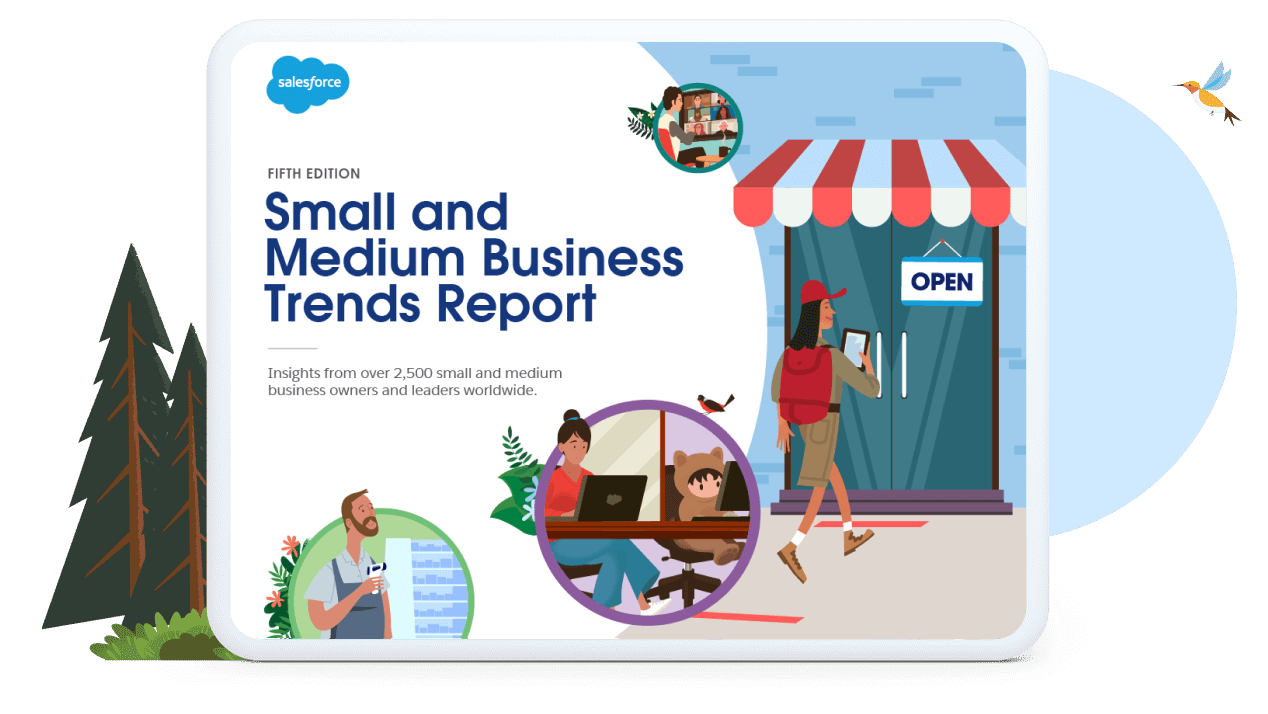If your SME is only using social media as a promotional megaphone, it’s missing a prime opportunity: building an online community.
Online communities offer a place for brands to build and nurture relationships, bring together like-minded people, share inspiring, funny or informative content, offer tips and best practices, and unlock the power of their customer base.
Best of all, brands can find their audience where they’re already spending much of their time: online. But online communities have to be maintained, controlled and cared for in order to be effective. That’s where community management comes in.
The SMB Trends Report 5th Edition
Discover what’s driving today’s small businesses – and see where they might be headed next.

What is community management?
Community management is how you create, maintain and run your online community. It’s about crafting the experience your community provides, and overseeing how your external audience (customers) and internal audience (employees and partners) engage.
Some businesses focus on using their community to give a personal, human face to their organisation. Others manage it around providing helpful information – think support pages and tips. Others simply use it to gather feedback for improving or developing products or to build brand awareness and create advocates.
The method of community management you choose – and the type of community manager you’ll need – will largely depend on your business objectives.
The benefits of good community management
Good community management can unlock a host of benefits for SMEs – some expected and some surprising.
Community management empowers your organisation to:
- Gather valuable feedback about existing products and services.
- Engage in real conversations that drive brand loyalty.
- Provide assistance, both from community members and your internal team.
- Gather crucial information about your brand’s reputation.
- Build excitement for new products and services.
- Gain insights into the wants and needs of the customer, enabling more impactful marketing and better product development.
- Leverage UGC (user-generated content) to drive awareness.
- Increase customer retention and ALV (average lifetime value).
- Provide the community with a place to engage with like-minded individuals, build relationships and collaborate.
Lego’s ambitious customer community has driven amazing product development and become a competitive advantage for the company. And the Salesforce Trailblazer community has connected millions of Trailblazers all over the world, enabling them to share insights, learn new skills, plan meet-ups and inspire each other to reach their goals. What’s the goal for your business?
How to create a community management strategy for your SME
- Evaluate social media platforms. Instagram and YouTube are great ways to engage your audience on a visual level, while Facebook and LinkedIn groups enable customer communities to participate in deeper discussions around common interests. Even younger platforms like TikTok are becoming a target for established brands, as the chance to go viral can boost brands without a big marketing budget.
- Identify your target audience. Your analytics will tell you quite a bit about how your audience is interacting and where they tend to hang out online. Make sure to go where the data tells you, and ensure that your customer community experience is aligned with the strengths of those channels.
- Lock in your voice. You will need to adapt your content for different channels. For instance, it can be hard to deliver long-form thought leadership in 280 characters or to encourage community discussion on a platform like Instagram or Pinterest. But it’s still important to use the same tone and brand voice across channels, even if the content will be different.
- Look at qualitative research. Want to know how to improve your customer community? Just ask. Community feedback is one of the best ways to find suggestions for improvements. Not only will your community know your products or services well, but they may have suggestions for how the community can provide more value. You can even offer incentives for feedback and drive long-term loyalty.
- Research similar communities. Look at the communities your competitors have created. What are they doing well? Where are they falling short? What channels are they using? Which channels seem to be most effective? Look at what content is driving the most engagement. Does it tell you anything about your own customer community? Are there gaps you can fill?
- Identify KPIs. Once you know what you want to accomplish with your community, you can set benchmarks to evaluate your progress. For instance, you can track increases in website traffic or new followers. Try not to get too caught up in metrics, though. After all, the goal should be to offer help, foster a sense of belonging and be there to provide whatever the customer needs, not just chase likes or shares.
- Have the right tools. To maintain your customer community, you may want to use a community-building software solution, or you may want to use external platforms like Slack or Discord. You can also use tools to listen in on social media, measure customer engagement and create marketing moments that actually matter.
- Brainstorm content ideas. When managing your customer community, you’ll want to ensure you create content that connects with your customers and adds value to their experience. You may want to tap internal expertise, develop a podcast, create how-to videos, etc. Think about things that will initiate discussion and build positive feelings about your brand. Once you have the right content, create a calendar to organise its deployment.
- Work out any issues by beta testing. Before going live with any changes to your customer community, put it through some rigorous beta testing and make sure that there are no bottlenecks. Ensure that the experience is smooth, that your brand voice is evident and that the overall experience creates a good impression.
- Get the word out, launch and drive engagement. Don’t rely on the axiom, ‘if you build it, they will come’, or your community may end up as a ghost town. Instead, be proactive about driving engagement. Have team members ready to initiate discussions and respond to customers. And most of all, be ready to solve problems, gather feedback and build better relationships.
Keep the community running smoothly
Once your community is optimised, you’ll want to monitor it and see how it can be improved to deliver maximum benefits.
Here’s what you’ll want to look for:
- Regularly check in with members and analyse conversations within the community.
- Capture actionable data for a deeper view of your customers.
- Find new ways to keep members engaged. Are you delivering an exceptional customer experience?
- Skill up your team in social media.
- Look for ways to innovate within the community, such as gamifying experiences or offering competitions based on user-generated content.
- Show appreciation to your members. Things like exclusive invites, sales and loyalty programs can help cultivate a community and increase customer retention.
- Sharpen your brand voice and stoke new conversations.
You can drop by the Salesforce Trailblazer Community to see how members are sharing knowledge and helping each other grow. And to see how you can provide more customer-centric experiences to take your business to the next level, you can download our eBook, Thriving in the Experience Economy.
























